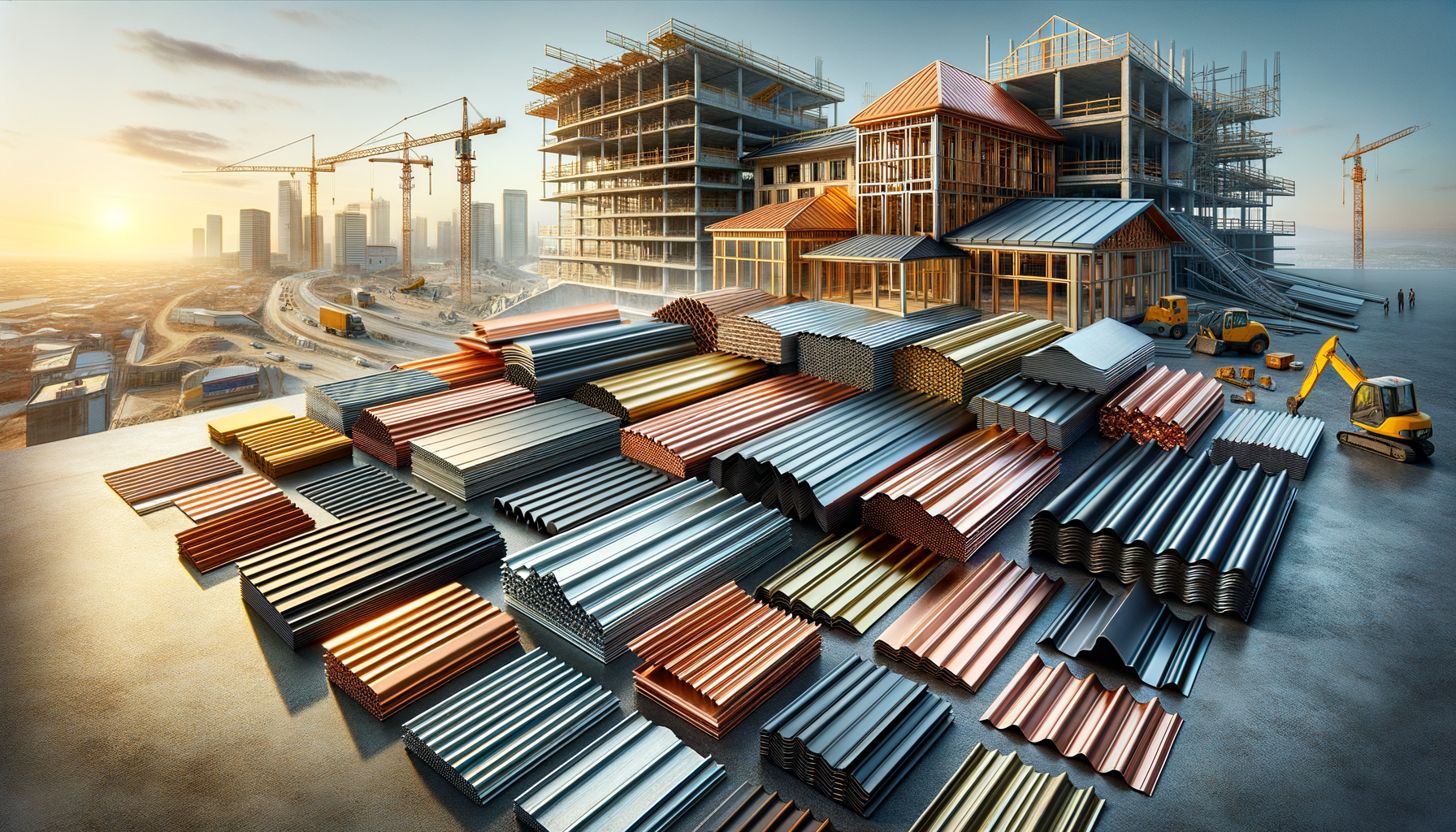Understanding Metal Roofing Sheets
Metal roofing sheets have long been a popular choice in the construction industry due to their durability, weather resistance, and aesthetic appeal. These sheets are often made from materials such as steel, aluminum, copper, and zinc, each offering unique benefits. The versatility of metal roofing makes it suitable for various applications, including residential, commercial, and industrial buildings. One of the key advantages of metal roofing is its longevity. Unlike traditional asphalt shingles that may need replacement every 15 to 20 years, metal roofs can last 40 to 70 years, depending on the material. Additionally, metal roofs are highly resistant to weather elements like rain, snow, and wind, making them a reliable choice for regions with severe weather conditions. Moreover, metal roofing is environmentally friendly, as it is often made from recycled materials and can be fully recycled at the end of its life. This sustainable aspect appeals to environmentally conscious consumers and builders looking to reduce their carbon footprint.
Types of Metal Roofing Sheets
When selecting metal roofing sheets, it’s important to understand the different types available and their respective advantages. Common types include standing seam, corrugated metal, and metal shingles. Each type has its own set of characteristics that make it suitable for specific applications. Standing seam metal roofing is known for its sleek, modern look, with raised seams that interlock to provide excellent water resistance. This type is often used in commercial and contemporary residential buildings. Corrugated metal roofing, characterized by its wavy pattern, is one of the most economical options and is often used in agricultural and industrial settings. Its design allows for effective water runoff, making it ideal for areas with heavy rainfall. Metal shingles mimic the appearance of traditional roofing materials like slate or wood, offering a more classic aesthetic. They are often chosen for residential properties where maintaining a traditional look is desired. Each of these types offers distinct benefits, and the choice will depend on factors such as budget, design preference, and environmental conditions.
Coatings and Finishes for Metal Roofing
The performance and longevity of metal roofing sheets can be significantly enhanced by applying various coatings and finishes. These coatings serve multiple purposes, including protection from corrosion, improved aesthetics, and increased energy efficiency. Galvanized steel, for instance, is coated with a layer of zinc to prevent rusting, making it a popular choice for areas with high humidity or salt exposure. Another common coating is the galvalume finish, which combines aluminum and zinc, offering superior resistance to oxidation and corrosion. For those interested in energy efficiency, reflective coatings can be applied to metal roofs to reduce heat absorption. This helps in lowering cooling costs during hot months by reflecting more sunlight and reducing the roof’s temperature. Additionally, colored finishes are available to match various architectural styles, allowing homeowners and builders to achieve the desired look while benefiting from the protective qualities of the coatings. Overall, the right coating or finish can extend the life of a metal roof and enhance its performance in specific environmental conditions.
Installation and Maintenance Considerations
Proper installation and maintenance are crucial to maximizing the benefits of metal roofing sheets. While metal roofs are known for their durability, incorrect installation can lead to issues such as leaks, noise, and reduced lifespan. Therefore, it’s essential to hire experienced professionals who are familiar with the specific requirements of metal roofing systems. During installation, attention must be paid to factors such as proper sealing, securing of panels, and allowance for thermal expansion and contraction. Regular maintenance is also important to ensure the longevity of a metal roof. This includes periodic inspections to check for damage, cleaning to remove debris and prevent water pooling, and repainting or recoating as needed to maintain the protective layer. Additionally, addressing minor repairs promptly can prevent more significant issues from developing. By following these guidelines, homeowners and builders can ensure that their metal roofing investment provides long-lasting protection and performance.
Cost and Economic Benefits of Metal Roofing
While the initial cost of metal roofing sheets may be higher than traditional roofing materials, the long-term economic benefits often outweigh the upfront expense. Metal roofs have a longer lifespan, reducing the need for frequent replacements and repairs. This can lead to significant savings over time, making metal roofing a cost-effective choice in the long run. Moreover, metal roofs can increase the resale value of a property, as potential buyers often appreciate the durability and low maintenance requirements. In terms of energy efficiency, metal roofs with reflective coatings can reduce cooling costs by reflecting heat away from the building. This is particularly beneficial in warmer climates, where air conditioning expenses can be substantial. Additionally, some insurance companies offer discounts on premiums for homes with metal roofs due to their resistance to fire and extreme weather conditions. By considering these factors, property owners can make informed decisions about the financial implications and benefits of choosing metal roofing for their projects.




Leave a Reply